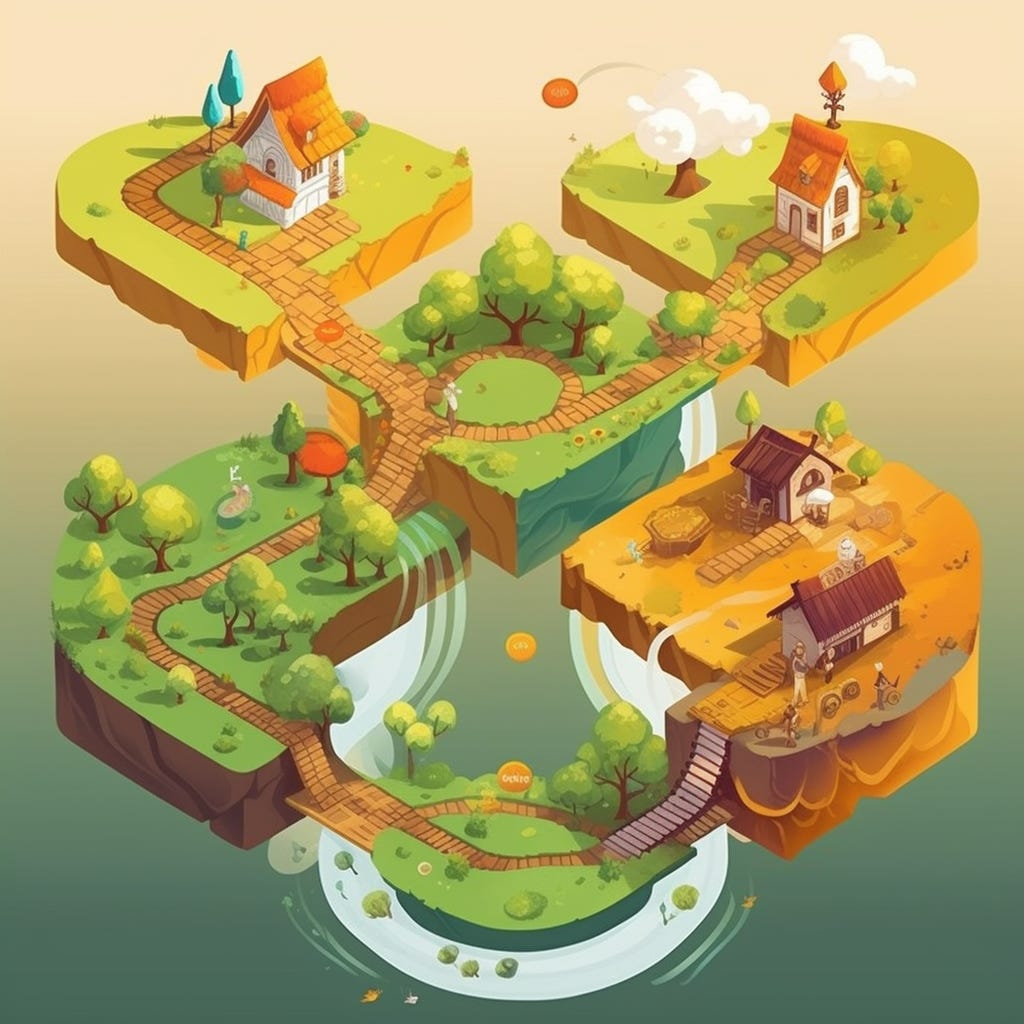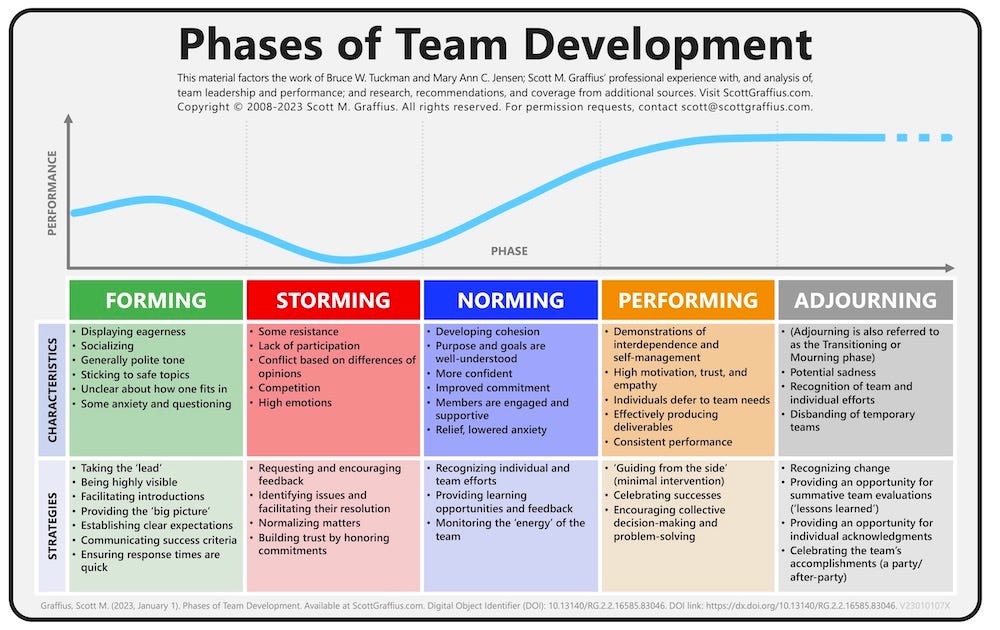We kicked off our first article about teamwork with Google’s Project Aristotle and the most important trait of a team: psychological safety. Members of these teams experiment, challenge, empower and support one another. Once you’ve been part of teams with a high level of psychological safety, you’ll always want to reach that same zone. With every new team you become part of. And that journey is far from easy, in fact, it is extremely hard. But not undoable. There are a lot of mental models that can help us along our journey. We’d like to address one of them today: Tuckman’s stages of group development.
“The wrap”
Group Dynamics
”The gift”
A mental model to recognise how much involvement is needed as a leader
‘The whole is greater than the sum of its parts’. A quote by the great Greek philosopher Aristotle, hence the name Project Aristotle, and the foundation of everything that has to do with studying group dynamics. To know why a group of people - the whole - perform the way they perform, it is not enough to just look at the individuals, or team members - the parts -. When people find a way to work together like a team, they can move mountains.
One of the people known for his research in the domain of group dynamics is Bruce Tuckman. In 1965, he published his theory about the 4 different phases a newly-formed team will go through: forming, storming, norming and performing. Let’s go through each of them.
The first phase, forming, starts as soon as a group of people come together to solve a challenge. It can be any type of project or problem, small or big. Every single newly formed team starts in this phase. A fresh start always comes with lots of energy and motivation to achieve results. Usually it is still a vague phase, in which each team member draws on their previous working experience to find ways to work together. As a leader, you should lead by example. Set goals and give the team direction. At the same time you have to notice what power patterns are emerging and what possible hindrances to the team's future success start coming up.
As soon as people get to know each other, and start working together, differences in way of working or personality become clear. Enter the storming phase. Some people will have a natural tendency to take the lead, others will fall to the background a bit more. Everyone starts looking for their natural place in the group. Some people will feel more confident and start questioning parts of the group’s goals or roles and responsibilities. And sometimes this will cause friction. Learning how to tackle this friction and conflict, is vital for the teams future succes. According to Tuckman, some groups ignore this phase altogether, other groups never succeed in progressing because they can’t seem to find a way to address and resolve the conflict. Your leadership style as a leader in this phase needs to be of a guiding and present nature. Emphasise what brings the team together, what each brings to the team, and help set boundary rules that guide conflict resolution: your team's working agreements.
The moment conflicts have been resolved and the team’s goal has been established, we are entering the norming phase. Some extra rules on the way of working have been made, and all of the team members are working towards the success of the team. Even if they are aware they might not completely have fitting personalities, they manage to set this aside in favour of the team. The team has defined conflict resolution mechanisms, and is on their way to success. As a leader you should challenge the team: don’t let them settle too fast. Instil the mindset of experimentation and incremental improvement. Install feedback loops, e.g. through regular introspection and retrospectives.
If you’ve done all this well, the team can evolve towards the performing phase. They are now strong enough to make their own choices, and to solve possible conflicts by themselves. The involvement of leadership is minimised to just being available when the team needs you and to monitor the team’s wellbeing.
The four stages don’t necessarily occur one after the other: be aware that every team can go back to a previous stage because of changes, so don’t expect to be fully off the hook. As soon as the context changes (eg. new team members join, leadership changes, the goal changes, etc...) the team dynamics will change as well. As the team is hardened through time, they will go through these phases faster, with more success.
Later in his life, Tuckman also described a new team phase which he called `adjourning`. It is nice to have a long lasting high performing team, but sometimes teams stop to exist. The goal has been reached, or the project just has to stop, or any other reason why the team does not have a purpose anymore. Often this phase is overlooked but we should be aware of it as it can bring sadness, almost close to mourning. And this too needs guidance so the members of the team can come to closure. You can celebrate what you did together and describe learnings to take along to your next journey.
The performance of the team during all of these phases differs. While a new team can show immediate effective performance during the forming phase, that same performance shows a big drop when entering the storming phase. Often, due to the conflict, team members have less attention for the overall result. After the storming phase, the performance rises steadily again to reach its peak or plateau in the performing phase. Remarkable to see is the plateau the team reaches is higher than what the team could achieve when newly formed. Storming as a team is not always easy, but the benefits you obtain from doing that sets the team up for future success.
As the team evolves, so will the need for your involvement and leadership requirements. In upcoming blogposts, we’ll deep dive in more techniques and tools to help you in guiding teams through these lifecycles. The bigger your mental toolbox, the easier you’ll find it to recognise the right characteristics and to change your leadership style along the way. Stay tuned!





